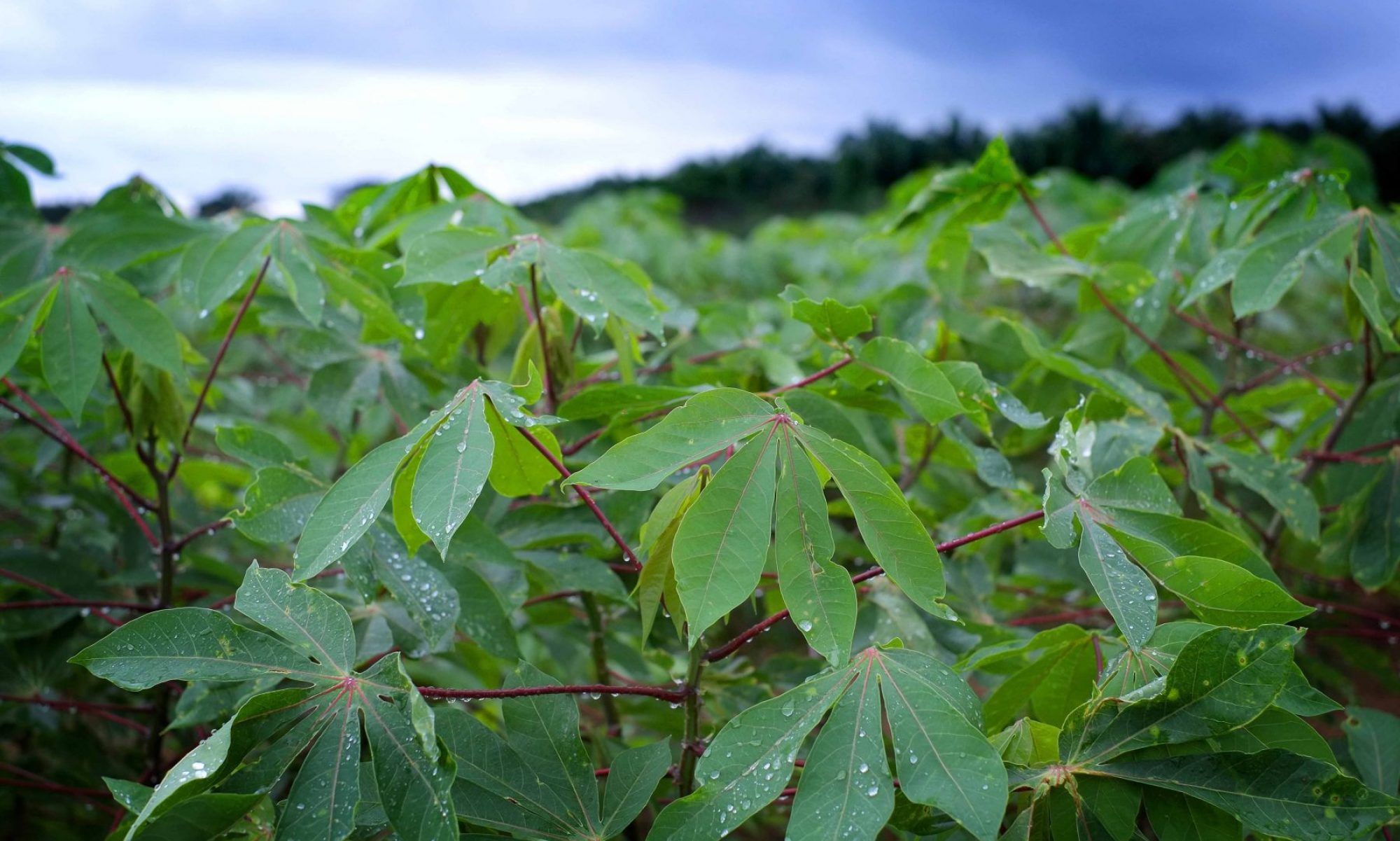Feeding the worlds growing population – from Latin America to Africa
Cassava and the food security problem
In an effort to supply the worlds current population of 7 billion, and a future population of 9 billion by 2050, with enough food scientists need to develop innovative but practical sustainable strategies to increase crop yields and ensure a more secure food supply. At the same time, such strategies need to have as little environmental impact as possible. Cassava feeds 1 billion people in 105 countries and is the most important food security crop for sub-Saharan Africa. A priority for economic development in all the most important cassava-producing African nations is to greatly increase the production of cassava, making this important subsistence crop into a cash crop as well. This is because, unlike cereals, cassava yields are very stable during climate change. Thus, cassava will play a critical role for future sustainable and resilient economic development of sub-Saharan Africa in a rapidly changing world. Such yield increases can no longer be met by more plant breeding and fertilizer use. The problem is that soil fertility in Africa is very low and according to the FAO, African cassava yields are way below expected levels.
Towards Africa ….. What we hope to do:
On an SDC-SNF funded project, we have already shown that naturally occurring beneficial microorganisms, mycorrhizal fungi, can be practically used to significantly increase production of the globally important food crop cassava in low fertility soils in Colombia (Ceballos et al. 2013). At the same time, this has allowed a substantial reduction of phosphate fertilizer applications. The same technology was effective in very different soil types, climate and cassava varieties and worked at different levels of phosphate fertilization. Thus, scientists already have an innovative solution to greater cassava production that should be applicable to sub-Saharan Africa, where cassava is the most important food security crop for subsistence farmers. Historically, the biggest step to massively increasing global food production was the “green revolution”, where famers and scientists used natural genetic variation in plants to breed new improved and more productive varieties, without the need to create GMO crops. Given that some microorganisms can greatly increase crop production, it is surprising that microbiologists have never followed the path of plant breeders and tried to breed improved and more efficient non-GMO microbes using their natural genetic variation. However, due to lab-based technological breakthroughs made in Switzerland, we hypothesize that this is now possible with mycorrhizal fungi and applicable to globally important crops. Our future goals have three key objectives:
- Objective 1. Increase food security now by using what we have already developed: To apply biotechnologically-produced mycorrhizal fungi to improve cassava production in mono- and inter-cropping systems in four different regions of Africa (Nigeria, Democratic Republic of Congo, Kenya and Tanzania), to assess its socio-economic impact on smallholder farmers in each region and deliver this technology to smallholder farmers.
- Objective 2. Improve food security even more for the future population: To test the feasibility of a molecular-based improvement program on mycorrhizal fungi for increasing cassava yields and security in the future over that which is currently possible in Objective 1.
- Objective 3. Make sure that what we develop has a low environmental impact: Conduct an environmental impact assessment, evaluating potential beneficial effects of applying mycorrhizal fungi, by reducing fertilizer applications, as well as possible harmful or beneficial effects on the diversity and structure of native soil microbial communities, test the potential invasiveness of the newly added strains and assess whether any potential genetic exchange could occur between the introduced fungi and local populations.
Scalability: While focussing on one group of fungi may seem very narrow, the project has enormous potential for up scaling. Firstly, the project seeks to provide immediate solutions for feeding people while developing something even more effective for the future growing population. Secondly, the fungi colonize all our major food crops and so this technology can be transferred to other crops, not just cassava. Thirdly, the project is potentially applicable to any other African countries where cassava is grown (this covers most of sub-Saharan Africa).
